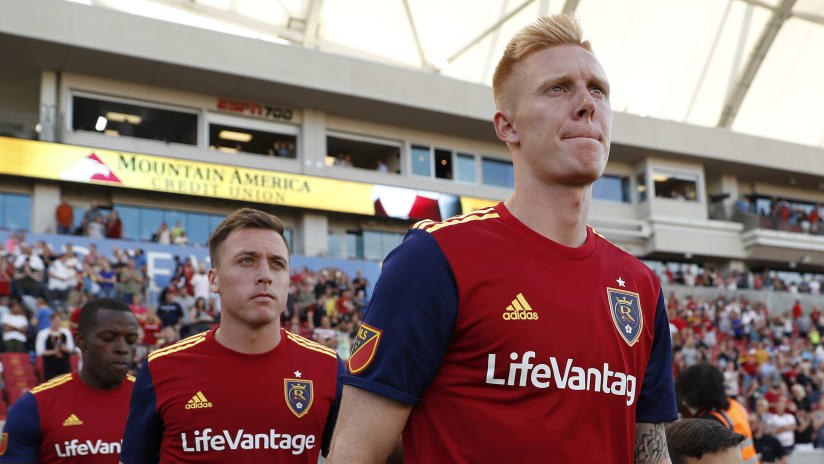NOTE: Every day this week, FC Cincinnati will take a deeper look at various academy programs across MLS that stand out for either their success in developing players for the first team – and international transfers – or for their methodology in training and/or integration into the first team. Last week, we started with an overview. The first two teams featured were Sporting Kansas City, the Philadelphia Union. A story on FC Dallas will run Thursday.
On Dec. 3, Real Salt Lake announced a new coach, general manager and technical director to lead the club into the next decade.
But there was a catch: they weren’t exactly new hires. All three were promoted from within the organization.
- Freddy Juarez, who had been the club’s interim coach since August, had the interim tag removed and was named head coach. He originally joined the RSL Academy as a coach in 2010.
- At 34 years old, Elliot Fall is their new GM, the youngest in that position in MLS. He arrived at the club in 2007 and was most recently the assistant GM.
- Dan Egner is the new RSL technical director. After joining in 2015, he became the Real Monarchs GM and helped the side win the 2019 USL Championship last month. He’s only 30.
All three promotions underscore that academies aren’t just for player development. They’re also for developing technical staff, too.
After former coach Mike Petke was terminated in August, Juarez replaced him and led the club to a third-place finish in the Western Conference. Maintaining success despite personnel changes shows how a club’ overarching philosophies and ideologies can transition seamlessly if they’re truly valued within an organization. This is what RSL aim to embody.
So, how did they get here?
Having a $78 million academy facility helps
“Teams will try and catch up to us … we just need to make sure more things are in place.”
Tom Spall was just asked how the RSL Academy maintains their inspiration for staying innovative. Serving as the academy’s director since June, technically, it’s his job to constantly evaluate players and see which could eventually join the MLS side as a Homegrown Player.
But it’s hard to think “what comes next” from an infrastructure perspective when you’re already leading the pack.
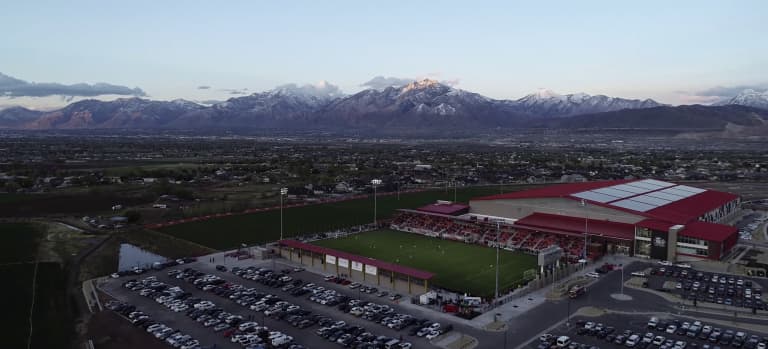
Photo via Real Salt Lake.
Even looking at the Zions Bank Real Academy is breathtaking.
The facility includes rolling grass fields, a stadium, a residency program, a high school and a backdrop of the jagged Wasatch mountain range.
This is where the club’s $78-million facility resides and the location of the only on-site high school across all MLS teams.
“We’re very, very lucky because it’s world-class,” Spall said of the facilities. “Now, we just need to produce world-class talent.”
And now there’s a framework to go about that.
With the majority of RSL’s academy players enrolled in their residency program, it’s easier to seamlessly have academy players train, go to class, then practice again in the afternoon. And with Real Monarch and the first team practicing there as well, it’s natural for the younger players to be immersed with professionals.
“We talk about a holistic development,” Spall said. “Part of that development is how they’re behaving in the dorms, their GPA and their footballing.”
Students have more flexibility than normal high schoolers – like a player can skip class to train with the MLS side provided they make up for missed time later. But there’s also a GPA requirement, and players who can’t meet that minimum are required to spend more time in study hall and less time actually playing or practicing.
“Yes, we want professional footballers, but we’re trying to have a better link now with the colleges and sign our boys to college programs,” the academy director said. “Out of 20 boys in each age group, if three or four get a professional contract, we need to make sure the other 16 or 17 boys have school work up to scratch and can go to a good college to continue playing soccer.”
The advantages this infrastructure creates are obvious.
The possibility of a morning and afternoon training session is an unheard of luxury for many MLS academies, and especially the ones who haven’t yet established residency programs.
The FCC Academy, for example, have three players who have a 200-mile roundtrip between home and the Mercy Health Training Center in Milford. That’s not a factor for RSL’s academy players, who live, learn and practice at the same complex.
Vertical vs. horizontal development
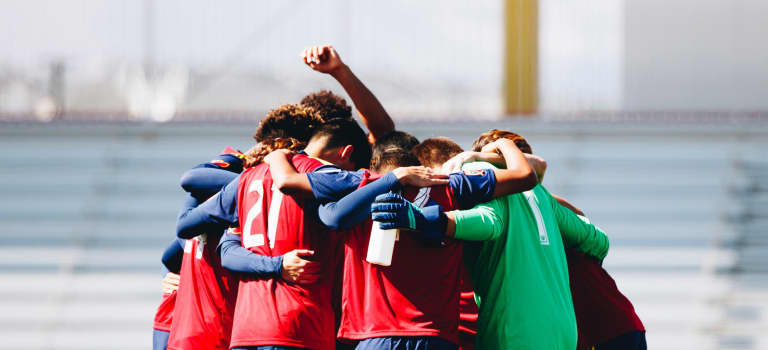
Photo via @RSLAcademy, Twitter.
The majority of clubs view their teams – pre-academy to the first team – as a pyramid. Starting with a wide base, the top players filter toward earning a professional contract. That’s an image easy to visualize with vertical growth and progress.
Spall looks at it differently, though.
For him, the Real Salt Lake Academy use a horizontal pathway.
“I don’t like the vertical side of it,” Spall said. “If you’re 15 and you’re good enough, you should play across the age groups with the (Under) 17s and 19s, Monarchs or first team. Once you start talking about playing up or down, it becomes a difficult conversation to have … it’s served ourselves well in the past and hopefully what we’re doing moving forward.”
Theoretically, while other academy players across country are in class, RSL’s talent can train with older age groups, with the USL Championship side or the MLS. That flexibility, in addition to the facility itself, offers unmatched options that help Salt Lake if they wants to recruit nationally.
Perhaps that explains why so many players have developed in the academy.
RSL’s roster currently includes 10 Homegrown Players, but the club have had 21 since Donny Toia became the first in 2011. The 21 Homegrown Players are second in MLS history, only trailing FC Dallas (25).
In 2018, the club became the first in league history to deploy an all-Homegrown backline. This past season, it was the first to start six HGs in a match (March 23 at LAFC).
From a first-team perspective, the constant development of academy graduates to MLS starters is impressive, and on occasion, unparalleled. And with the second team having just won the USL Championship, expect more players to use the horizontal pathway.
Of course, the constant success at developing first-team players creates challenges for the academy.
While Spall and youth coaches meet with the first-team technical staff to discuss depth charts, they need to ensure a club that relies heavily on Homegrown Players is producing academy products good enough to fulfill needs.
“We’re making sure we’re doing the right work so when we get (players) into that arena, it’s a seamless passage through to the Monarchs and then into the first team,” he said.
Expect RSL to start producing even better players from their academy
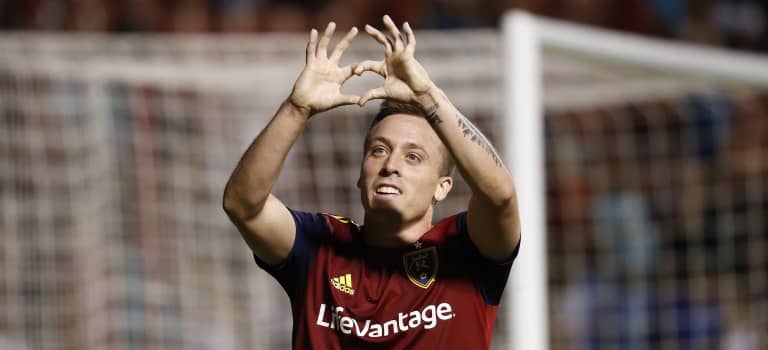
2018 MLS Rookie of the Year Corey Baird. Photo taken by Jeff Swinger-USA Today Sports.
Last month, Arnold Rijsenburg was named the academy director of coaching. Working underneath Spall, Rijsenburg works on the soccer side to modernize training methods and improve the standard of play.
Considering his resume – which contains work with the top Belgian clubs in addition to the Belgium National Team – his addition to the academy should generate quality talent in the coming years.
“My belief is that an academy manager’s role is more of a management role, and we need someone in there that’s going to educate coaches and oversee the coaching program,” Spall said of Rijsenburg. “I see myself stepping away the day-to-day (duties) on the field and overseeing an overarching role.”
By stepping back, that allows the new director of coaching to have a hands-on approach to develop more players who can potentially earn professional contracts.
“It’s great we’ve got Arnold,” Spall said. “He’s worked with some good clubs in Europe, with Belgium and with some fantastic players. Hopefully he can produce that here and we can move forward and get a lot of boys into the first team who are more of a finished product.”
What comes next
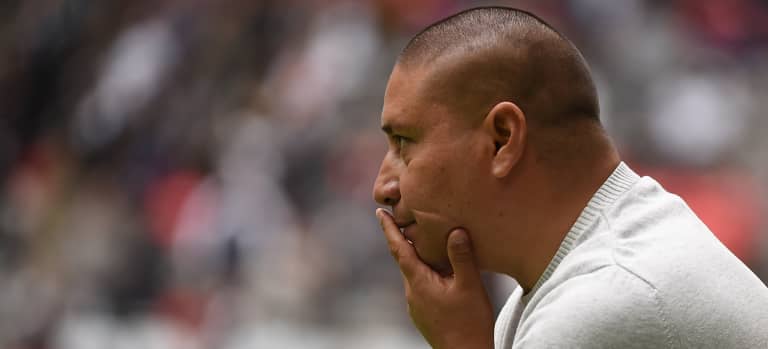
RSL coach Freddy Juarez. Photo taken by Anne-Marie Sorvin-USA Today Sports.
Real Salt Lake have one of the top facilities in America and have a natural advantage to attract players. In addition to the new director of coaching, how much will that change the type of players the club produces from its academy?
In addition, with a newly-promoted first-team coach and technical staff, will their promotions also be as seamless as the transition players make as they move horizontally across the academy?
The infrastructure is there and so are talented players. The question is: will the results continue to get better?
As Spall noted, teams will try catching RSL. What can he do to ensure they don’t?

